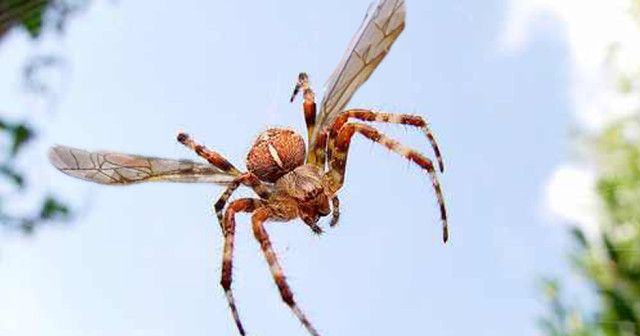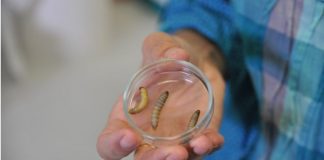
Spiders Can Harness Electric Fields to Fly? Spiders can’t fly, but they can naturally paraglide. Their ability is known as ballooning, and scientists have now shown that it extends further than windy thermals. Electric fields are strong enough to trigger ballooning even when there’s no wind.
Erica Morley and Daniel Robert of the University of Bristol, UK have been studying the ways spiders move with electricity since 2013. They focused their studies on the atmospheric potential gradient (APG), the constant electric circuit revolving around the Earth.
As noted scientist Richard Feynman once explained, “the earth is negative, and the potential in the air is positive.” That tension is maintained by thunderstorms, which are happening at some point in the world at any given time. But that tension varies throughout the planet. On a day without a cloud in the sky, APG levels can get up tp 100 volts per meter, the metric used to measure the strength of an electric field. However, in a thunderstorm those levels can rise up to 10 kilovolts per meter, exponentially larger.
Morley and Robert wanted to see if spiders’ ability to balloon would be affected different by electric fields of different sizes. Using a lab setting and tiny, carnivorous Linyphiid spiders known as Erigone, the scientists were able to create uniform electric fields and observe the spiders abilities without any unexpected wind or environmental factors getting in the way.
When the electric fields were switched on, the scientists detected a notable difference. The spiders were placed on vertical strips of cardboard in the middle of plastic, and once the fields were humming they began standing on the tops of their legs and proudly sticking their abdomens out. This practice is called tiptoeing, due to its similarity to the human stance, but spiders save it for a special occasion: They only hold the pose when they’re ready to balloon away.
Some of the spiders even took flight, despite there being no wind in the lab. And when the fields were turned down, the spiders’ tells, like their hairs raising up on their feet in what’s known as trichobothria, died down.
“We don’t yet know whether electric fields are required to allow spider ballooning. We do, however, know that they are sufficient,” says Morley in a press statement.
Ballooning has fascinated scientists for years. Charles Darwin noted its occurrence aboard the HMS Beagle, filling the ship with more spiders than he would have cared for. Spiders have proven quite adept at riding the waves, electric or otherwise, even measuring out the wind strength and adjusting themselves accordingly.













